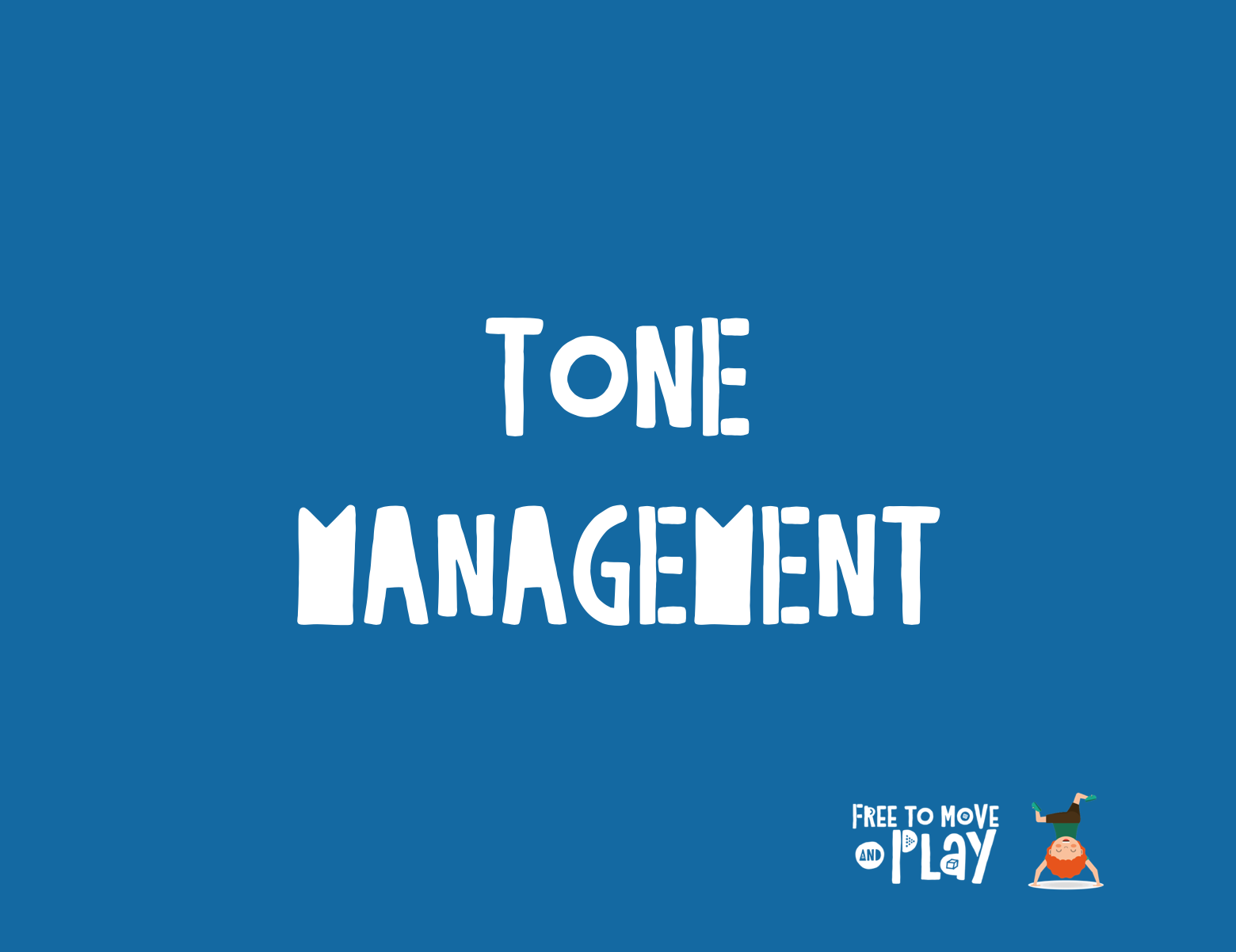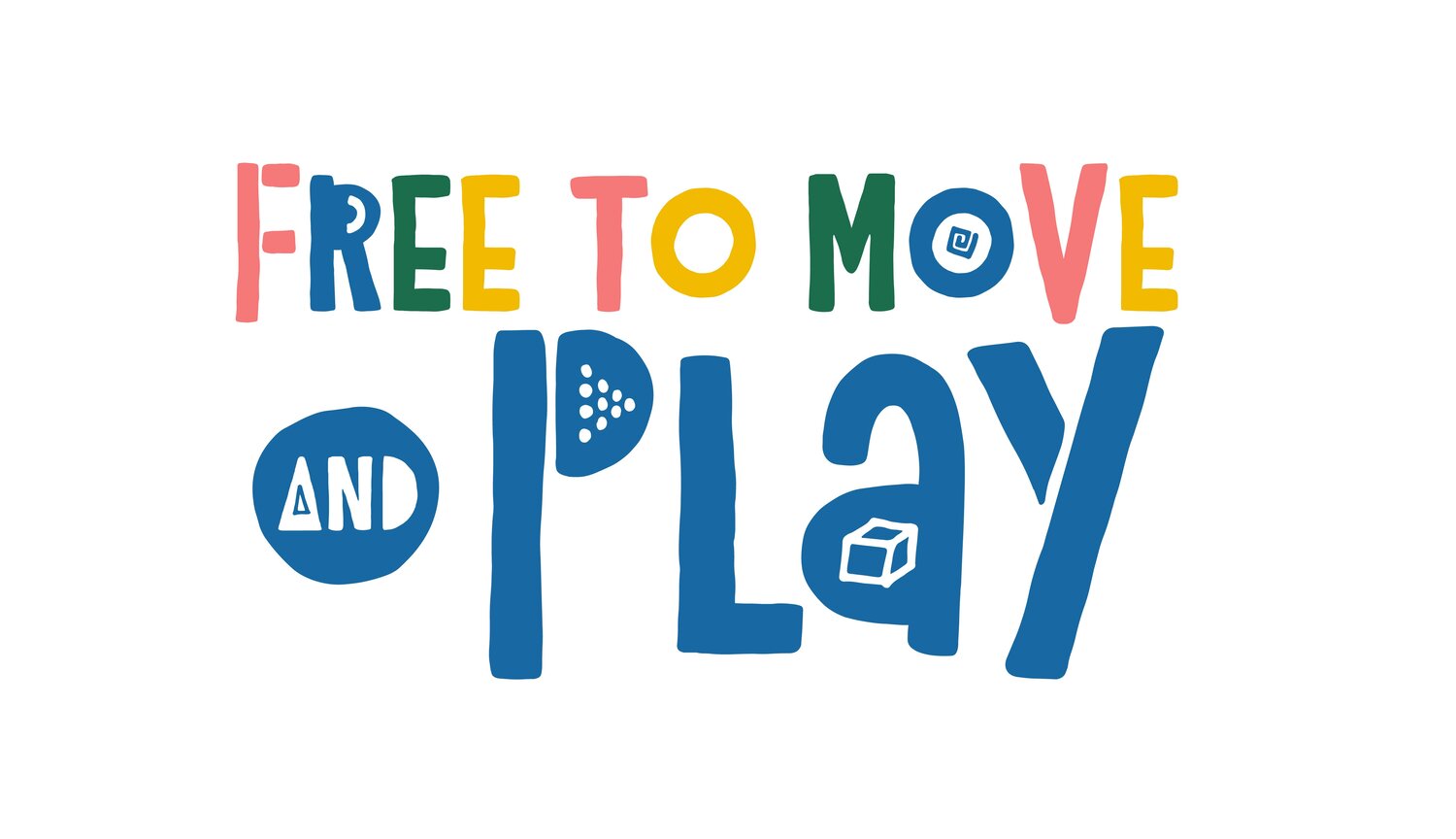
What Are Is Tone Management?
Tone Management is referring to muscle tone. Muscle tone is the resting state of muscle contraction or the tension in a muscle at rest. It is the resistance of a muscle to a passive stretch or elongation. I typically will test a baby or child’s muscle tone using the Modified Ashworth Scale for grading lying on their back in supine. If testing a muscle that primarily flexes a joint, the muscle is positioned with the joint in a maximally flexed position and then it is passively moved to a position of maximal extension over one second. For instance, to test a hamstring muscle, the knee would be maximally flexed and then moved into extension over one second. Scoring then is based on how much increase in muscle tone is felt or not felt and how much resistance is felt moving the muscle throughout the rest of the range of motion quickly.
Children with high muscle tone may seem more tight, whereas a child with low tone can feel “floppy”. Normal muscle tone is high enough to resist the effects of gravity in both posture and movement yet low enough to allow freedom of movement. We need enough muscle tone to hold up against gravity and maintain good posture and alignment but not so much to make us stiff or rigid. No one has perfect tone but rather muscle tone is a spectrum. Some people have lower tone while others have higher tone. The amount of muscle tone we have also changes from infancy to adulthood. Experienced pediatric physical therapists can identify whether a child has lower or higher muscle tone through handling, observing positions and movements against gravity, and performing passive movements using the Modified Ashworth Scale for grading.
Why Is Identifying a Child’s Muscle Tone Important?
Evaluating whether a child has low or high muscle tone is important because as mentioned earlier it affects their posture in positions against gravity and the quality of their movements. Hypotonia is an abnormally low level of muscle tone whereas Hypertonia is an abnormally high level of tone. They typically can be the result of many conditions, disorders, diseases, and syndromes that would need to be diagnosed by a Pediatric Neurologist or Geneticist. However, hypotonia isn’t always a sign of a major problem and can be just a symptom rather than a condition. It can be caused by a number of underlying problems which can be neurological or non-neurological.
It can be a sign of a neuromuscular disorder but it doesn’t necessarily mean a child has a neuromuscular disease. Even in the absence of a specific underlying diagnosis, however, children with hypotonia or low muscle tone can benefit from clinical intervention. Hypotonia or low muscle tone may also be associated with joint hyper mobility, ligament laxity, and decreased muscle strength. Muscle tone is not the same as muscle strength. As described earlier, muscle tone is the level of tension in the muscles at rest but strength is the amount of force a muscle exerts against resistance.
For the rest of this blog, I am going to address kiddos that are identified to have low muscle tone but do not necessarily have a diagnosis of Hypotonia like a child with a genetic disorder of Down’s syndrome or a neuromuscular disease like Duchenne’s Muscular Dystrophy which will be focused on in upcoming blog post (as well as Hypertonia). Babies or children with low muscle tone with or without an underlying diagnosis can benefit from skilled PT intervention if it is causing the child to use compensatory positions and movement patterns causing them to “cheat” and not use all the proper muscles to complete a movement or action. If a baby or child continues to use these patterns repeatedly, they will be reinforced and can impact their development and cause delays.
How Does Pediatric Physical Therapy Help With Tone Management?
Pediatric Physical Therapy needs to focus on helping a child or instructing a parent in minimizing compensations that will lead to impairment of motor functioning and instead building the posture, strength, and movement patterns that the child will need as he/she grows and develops. Good postural control affects all of our activities throughout our lives. An infant with low muscle tone may learn to roll from supine to prone by pushing into extension rather than using their flexor/abdominal muscles to lift the legs and rotate the trunk to initiate and complete rolling over.
Often infants with low muscle tone prefer sitting and standing to rolling and creeping. This is because it’s easier to lock joints against gravity and activate muscles near the ground. They have difficulty pushing up from prone into quadruped because they can’t control their core muscles over their hands and knees without a wide base of support and they may just push back into W-sitting instead. W-sitting is easier for them because it requires no trunk rotation or abdominal use to get into, to get out of, or to maintain. It’s a safer position for them because it is hard to fall sideways or backwards while in it. In other sitting positions, such as long, ring, or side sitting, it is easier to fall over because they require more mature balance reactions and core strength than a child with low muscle tone tends to have. An infant with low muscle tone may have difficulty with playing in kneeling, pulling up to standing, and when positioned in standing may have poor ankle/feet alignment beyond just the typical foot pronation or flat foot until they develop the intrinsic foot muscle strength needed for progression to cruising and walking. Physical therapists can help infants, toddlers, and children with low muscle tone by reinforcing correct positioning and alignment to help strengthen the correct muscles needed for gross motor skills to develop and to prevent orthopedic problems in the future because of poor alignment. Some toddlers that stand with significant foot pronation and ankle eversion (turning in) may need help with SMOs which are orthotics that come up just above the ankle and are worn with shoes in order to provide more normal ankle/foot alignment that will help a child activate the right leg and core muscles above.
Low muscle tone in the feet/ankles will affect their alignment all the way up to their knees, hips, and spine and can delay them from finding the stability and balance they need for letting go to stand alone or to begin taking independent steps. The orthotics may be temporary until they strengthen the correct muscles to help them progress to walking and then can be replaced with either arch support inserts or the right kind of tennis shoes. Skilled PT strategies will also include appropriate sensory activities that are associated with facilitating and activating muscle tone i.e. proprioception and vestibular systems. Proprioceptive activities that may include “heavy” work (pushing, pulling, etc.) , joint compression, or tactile input can promote co-activation of muscles for joint support. Vestibular stimulation such as swinging, rolling, balance reactions, changing head positions, etc. can help “wake up” and support increasing a child’s muscle tone as well.
In summary, it is important to understand a child’s muscle tone and how it may be affecting their development with motor skills.

